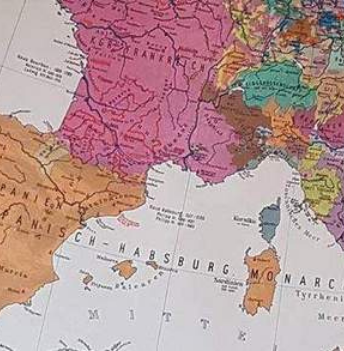
Snuff in Europe 15th-16th Century
Share
16th century Europe saw the beginning of Western capitalism, new values created by the Reformation and the Renaissance. There was still a heavy handedness with religious dissenters and many states became more centrist. At he beginning of the 16th, the population of Europe is about half of what it was a hundred and fifty years previously due to the Black Death. The greatest economic and demographic changes were engendered by the Trans Atlantic Trade. The world is changing and tobacco is part of it.

Tobacco use in Spain didn't take off right away. In the early 16th century Spain had routed and almost annihilated the final American civilization, the Aztecs. The indigenous first peoples of America were considered infidels and ultimately dispensable. One of the many taboos was smoking. This rendered the infidels much closer to the Church's arch enemy, Satan. The Spanish and Portuguese were both fervently religious societies.

The french explorer, Jacques Cartier, had a more original method of dealing with the first peoples of Northern America, namely the Iroquois, and that was co-operation and trade. The French contrary to Spaniards saw that tending a hand in friendship and trade was a better solution than physical violence. Cartier spoke in a flattering way about tobacco and in France the plant was seen as something positive.

The real introduction of tobacco to France was via Jean Nicot de Villemain. Nicot was a scholar and diplomat who first brought tobacco to France in mid 16th century. He was confident enough to send tobacco plants and seeds to Catherine De'Medici, Queen of France, as a New World panacea. She was the first woman in the French aristocracy to proclaim the benefits of nasal snuff. Curing everything from toothache to tumors. The plant was beginning to be seen everywhere in Royal society.

Nicot promoted the idea of tobacco as a medicine. 16th century medicine held the Galenic view. Galen, a second century Roman physician, believed that the body's health was based on balancing the four humors: phlegm, yellow bile, black bile and blood. Each humor had a temperature of hot or cold. The idea was trying to correct imbalances in these humors using botany and blood letting. Nicot used tobacco as a new found medicine within this context. Tobacco being hot and dry, would balance wet and cold humors. No one can be sure of the affirmed cures but several miraculous recoveries from tumors were reported.

In France snuffing gains popularity and smoking is accepted as a less popular alternative. In Spain smoking had been restricted to the New World and a few "unfortunate" souls that attempted the repugnant habit. However, a few decades later, tobacco is accepted in Spain via the Clergy. In America, the Catholic missionaries, priest and higher clerics were easily habituated to the plant but only in it's powdered form. Snuffing was infiltrating into western Europe.
A complete turn around from the Catholic Church was observed as reports from Portugal of Jean Nicot's successful cures using tobacco and thanks to the Queen of France, Catherine de' Medeci, the word spread quickly through Italy. Some promoters of this magic substance were: Giovanni de' Medici, the richest man in Europe; the Bishop of Saluzzo; Monsignor Cardinal Prospero Santacroce. Innumerable friars and monks, carried the seeds to the other Italian Kingdoms. All tacitly endorsed by Rome.

In 1565 Nicolá Monardes, a doctor from Seville published a pamphlet, called "Joyful News", extolling the benefits of tobacco. I quote..."Tobacco is an effective cure for any illness of any internal organ, for bad breath, especially in children who have eaten too much meat, for kidney stones, for tape worms, for tooth ache, for tiger bites, and for wounds from poisoned arrows or for any other manner of wound". This publication helped change the perception of tobacco from the Devil's herb to a New World medicine.

At this stage of European tobacco lore, most tobacco consumed was produced domestically and used in herbal medicine as poultices. However snuffing was spreading beyond the French court, principally through the efforts of the country's physicians. The more potent tobacco was imported from Cuba as it had stronger "medicinal" qualities. The demand for the imported variety encouraged many Spanish and Portuguese vessels to import large cargoes of the herb. The price skyrocketed and the plant became exclusive to the rich. As we shall see later on, tobacco will evolve from a medicinal herb to just pleasure. You can read more about snuff coming to England.
